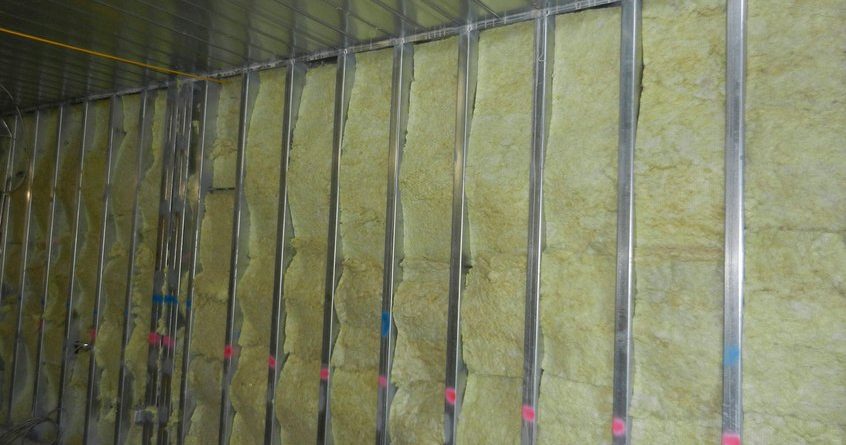Insulation for interior walls in commercial buildings
Weeks ago, we discussed the importance of the material and methods we use in our projects to achieve optimal energy performance in the space. One of the key aspects of energy efficiency is insulation. It provides resistance to heat flow reduces heating and cooling costs and improves the level of comfort in the space. Insulation is primarily used for thermal purposes; however, part of the energy performance goal is to create quieter, healthier and safer spaces, which is why insulation is also used for acoustic and fire purposes.
Thermal Insulation:
The main goal of using thermal insulation in commercial projects is to save energy and improve comfort within the space by reducing the transmission of thermal energy through the walls. The R-value determines the effectiveness of the insulation; it measures the resistance to heat flow, the higher R-value, the greater performance of the insulation material.
Depending on the province, city or zone, and the part you want to insulate, the different R-value you will need. There are two main types of insulation what works well for stud walls.
Fiberglass Batt: This type of insulation works perfectly for unfinished walls, floors and ceilings. It is made in different widths that allows it to fit between the framing members. Fiberglass is also UV stable, this means that this type of insulation does not shrinkage and loses thermal performance. Besides, the mandatory R-value in commercial buildings is R-13.
Spray Foam: This is water-based insulation that evaporates after application. It is an effective seal against air leaks and provides excellent insulating properties. In addition, it is waterproof and moisture resistant. This type of insulation is generally used in existing finished areas and irregularly shaped areas and it works perfectly in new wall cavities. You can find different R-value; the most common is R-3.7 and R-6.5 per inch.
Acoustic Insulation
An important factor when building a commercial space is the soundproofing within rooms and from adjacent rooms. Insulation can help to control noise levels and improve the acoustic performance of the wall. As a result, we can create environments where building occupants can focus without losing concentration and spaces where you can have confidential conversations.
As previously said, Fiberglass and wool insulation are used for thermal control but it also serves as soundproofing insulation. For optimal noise control, the density of the insulation should be 2.5-3.0 pounds per cubic foot. In general, this type of insulation comes in a roll, known as a batt, which is made from fibers of glass and cotton.
To determine how well the insulation attenuates sound, we can take as reference the Sound Transmission Class (STC), the higher the STC, the better performance of the material.
FiberGlass and mineral Wool insulation: It has a STC performance of 43 out of 60. An Insulation with a STC of 60 has excellent soundproofing qualities on a double layer of ½” drywall on each side.
Spray Foam Insulation: Reach an STC of 37-40, which means that you would be able to hear a loud speech, but not understand it, just a whisper.
Fire insulation
City codes require fireproofing walls. It helps retain and retard the spread of fire, limiting building damage and providing more time for safer evacuation of the building.
Fiberglass and mineral wool Insulation: Non-combustible and usually this type of insulation is part of the fire protection in commercial buildings.
Cellulose Insulation: This type of insulation is made from recycled materials, mainly with crushing newspaper and treated with chemicals to prevent the spread of fire and help reduce the flammability. Cellulose insulation is typically used in enclosed existing walls and open walls. It does not have a good performance as thermal insulation; the R-value is lower from 2.6 to 3.8.
As we can see in construction, we can find many materials and methods to get the job done and Insulation is not the exception. There are many different types of insulation you can find on the market, which can sometimes be overwhelming and difficult to choose the right one. Thus, it is important to know the differences so you can know which insulation will best suit your needs and budget.


